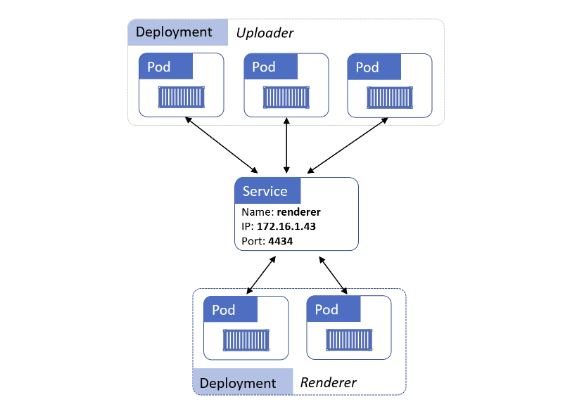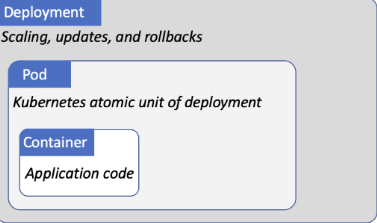Kubernetes Deep Dive — Basic Units
| Last Edited | |
|---|---|
| Tags | |
| study |
Here I began a deep dive into the K8S system and implementations. The main notes are from the k8S course, and other online resources. This chapter will be about the basic units of K8S.
Intro
“Kubernetes deploys and manages (orchestrates) applications that are packaged and run as containers (containerized) and that are built in ways (cloud-native microservices) that allow them to scale, self-heal, and be updated in line with modern business requirements.”
cloud-native app:
is an application that is designed to meet modern business demands (auto-scaling, self-healing, rolling updates, etc.) and can run on Kubernetes.
a cloud-native app may not run on a public cloud, it can also run an on-premises data center
microservice app:
a business application built from small parts. For example, an e-commerce app can be built from 1) web front end, 2) category service, 3) shopping cart, 4) authentication service, 5) logging service, 6) persistent role
Masters, Workers
Stateful vs Stateless web service
stateful: communications of servers are maintained. one request state will depend on the previous state.
example: file transfer protocol (FTP), database, online shopping, and banking using authentication tokens stored on both the client and server sides.
stateless: receiver (server) is not required to keep states that the sender sent (client).
example: HTTP, container application without volume
Master:

- API server:
RESTful API, post YAML config files over HTTPs;
YAML files include desired state of the application: which container image, which port, how many Pod replicas, etc. These files serve as Q&A in the graph above.
- Cluster Store (etcd):
distributed database, only the stateful part of the control plane
prefers consistency over availability: meaning etcd may down (unavailable) due to inconsistency of data
use RAFT consensus algorithm to handle multiple writes to the distributed db from different nodes
- Controller Manager
could involve in public clouds such as AWS, Azure, and GCP
- Scheduler
Worker:

- Kubelet:
responsible for registering worker nodes’ CPU, memory, storage resources
watch for the API server for a new task, and execute
report node status back to the control plane
- Container runtime
perform container related tasks: pulling images, starting, and stopping containers
- Kube-proxy
responsible for local cluster networking: routing, load balancing, etc.
DNS
responsible for service discovery
all nodes and pods can find a DNS service

Pod, Deployments, and Services
Constant check and adjusting
Applying each deployment manifest (YAML file) is a post request to the API server of the K8S cluster. Kubernetes will then inspect the manifest, record it as a desired state of the cluster, and finally monitor the cluster state and reconcile any differences in a watch loop.

Figure: Service and Deployment

Figure: deployment, pod, and container

Pods
Pods are a group of containers. Within a pod, containers can talk to each other using localhost
Design principle: put different containers into various pods to make them loosely couple, if they don’t need to share resources
Deployment
“a higher-level Kubernetes object that wraps around a particular Pod and adds features such as scaling, zero-downtime updates, and versioned rollbacks.”
Services
“Services provide reliable networking for a set of Pods.”
uses TCP/UDP to load balance a dynamic set of Pods. Dynamic means the old pods will leave and terminates, and new pods will join.
Reference:
Notes mostly are summarized from or refer to Learn Kubernetes: A Deep Dive https://www.educative.io/courses/the-kubernetes-course
Some graphs refer to An introduction to Kubernetes: https://www.jeremyjordan.me/kubernetes/
Stateful vs Stateless: https://www.interviewbit.com/blog/stateful-vs-stateless